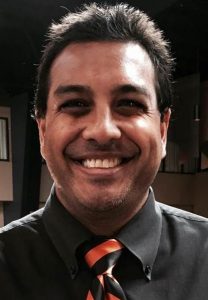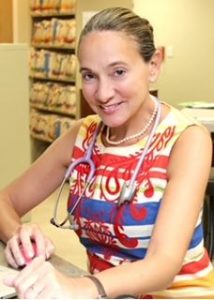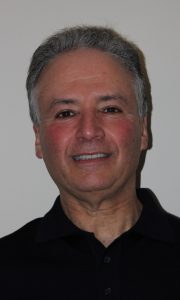Dr. Shetal Shah, MD, FAAP is a neonatologist at Maria Fareri Children’s Hospital. He is NYS AAP Chapter 2 Vice President and Chair of the Legislative Committee. This op-ed was published on northjersey.com on May 9, 2019.
Forty years ago, the United States eradicated endemic polio. It was a cooperative, national effort to eliminate a major public health threat, made possible by a lifesaving vaccine, an army of healthcare professionals and by parents who chose to vaccinate their children — many waiting in line for hours. Vaccines are considered one of the world’s greatest health achievements and are the main reason current parents of young children don’t remember polio, rubella, diphtheria and until recently, measles. Prior to the creation of measles vaccine over a half-century ago, approximately 3-4 million US cases occurred annually, resulting in thousands of hospitalizations, cases of lifelong disability and hundreds of childhood deaths.
New York is again facing outbreaks of measles. Almost 700 cases have been reported nationally the largest since the disease was considered domestically eradicated — largely from clusters of unvaccinated children in Brooklyn and Rockland County. The number of infected keeps rising. In a single week in April, 78 new cases were reported.
Washington State is also facing an outbreak and cases of measles span 22 states. Since 2001, over 100 measles outbreaks have occurred, including the 2014 episode centered on Disneyland.
Pediatricians foresaw the return of vaccine-preventable diseases because each week, we spend hours discussing the importance of vaccination to increasingly skeptical parents who, fueled by misinformation as well as unsubstantiated claims nurtured on the internet, cite greater concerns about the vaccines than the diseases they prevent.
When vaccination rates decrease, the return of measles, (or pertussis, or mumps) is inevitable. Parental refusal of vaccines is now so prevalent the World Health Organization declared it a “Top Threat to Global Health” this year, alongside HIV/AIDS and poor access to medical care. While measles has captured the public’s attention, there have been 426 cases of mumps this year, approximately 300 in March alone. Pertussis outbreaks occur so often they are now considered medically “routine.”
Worse than the suffering these diseases can cause (5 children have required intensive care from measles complications) is having the public health tools to prevent these illness and not using them. This is why the New York State Legislature should pass bills A.02371/S.02994 and eliminate all non-medical exemptions to vaccination for school attendance.
New York State allows parents to obtain religious exemptions from vaccination and more parents are getting them. Though most major religions support immunization – rates of religious exemptions in the state are now high enough to weaken population immunity levels (herd immunity) that almost 300 schools in the state are at risk. Moreover, what is often overlooked is the general population vulnerability of these diseases in immune compromise individuals such as those suffering with cancer, and others with impaired immune defense mechanisms such as AIDS as well as those with true contraindications who cannot be immunized.
Though New York, unlike 17 other states, does not allow for a philosophical exemption (a wish to not be immunized simply because one is against vaccination), it is clear religious exemptions are often truly philosophical ones dressed in religious doctrine. Having reviewed applications for religious vaccination exemptions, it’s clear many parents are trying to opt out of vaccination by co-opting religious texts – sometimes from multiple religions which parents state they do not follow.
Since religious exemptions are granted by local school boards, some parents feel if they complain enough, or threaten to sue, schools will relent. This process also makes school boards de facto courts of faith, dissecting which exemptions are rooted in religious conviction and which are not – a job school officials do not want and are often unqualified for.
In the wake of this year’s measles cases, Washington State is attempting to learn from the outbreak. A bill to restrict exemptions to vaccination passed the state’s Senate. The question is, can New York learn the same lesson?
This measure, sponsored by Legislators Dinowitz and Hoylman enjoys widespread support from physicians, public health groups, healthcare workers and parents of school-age children. If passed, the bill would put New York on equal footing with West Virginia and Mississippi – two states which have not experienced widespread outbreaks and with California – which despite having measles next door in Oregon has to date been spared a major repeat of its 2014 experience.
Regrettably, a small, well-organized group of opponents have harassed legislators and pediatricians, both in person and on social media. Their tactics not only are reprehensible and in some cases dangerous. These groups have overtaken town halls and disrupted public events. Protestors surrounded the car of New York State Senator Kevin Thomas, who supports the bill — and refused to leave, requiring the Senator to call the police. Assemblyman Dinowitz has been told by anti-vaccine activists, according to a report, that they hope his “grandchildren get autism.”
Pediatricians support this bill because allowing only medical exemptions is a proven way to increase immunization rates and protect all children from vaccine-preventable diseases. Since all kids who get immunized don’t generate an immune response sufficient to protect themselves, ALL parents should support this bill as a way to protect ALL our state’s children. It eliminates school boards from becoming arbiters of vaccination exemptions – which leads to different standards in each district – and places authority to grant exemptions in the hands of physicians.
These epidemics should motivate legislators to understand the importance of strengthening our public health infrastructure. If they fail to recognize the medical and epidemiological facts behind immunization and the policies which keep rates of vaccination high, then another outbreak is certain.



